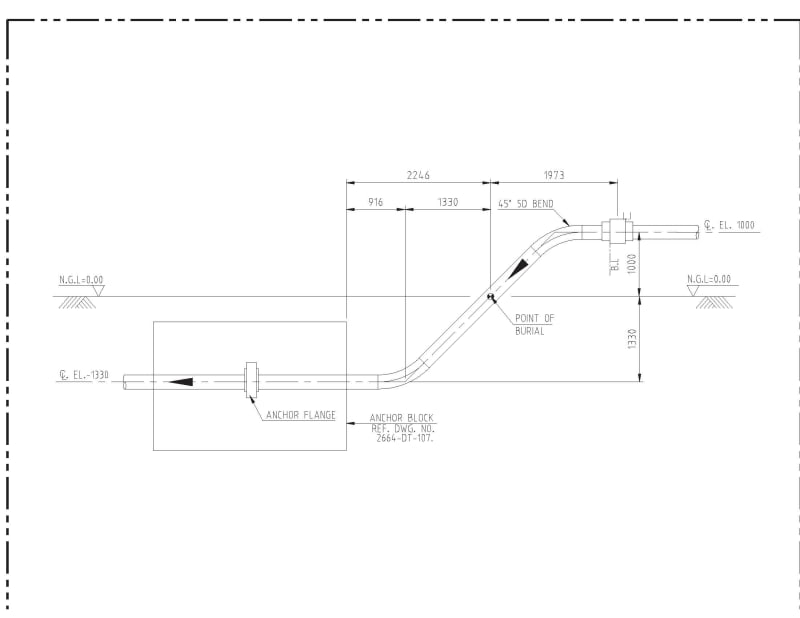Dood/ Wes,
I think you both have a lot to learn about anchor blocks. If you do a search in this forum (box in the top left corner) on anchor blocks, you will find many posts about it.
But in general, pipeline engineers hate anchor blocks, they rarely work, create stress concentrations and all for stopping movement of 15-25mm.
The forces involved can be huge when you put it into a stress analysis program and mark it as a 6 way anchor. Forces of 100- 500 tonnes are common, especially if you have any sort of temperature increase over the installed temperature. This can lead to anchor blocks bigger than a house.
The only people who think they are a good thing is piping stress engineers who like to have a fixed point coming into their system and think an anchor works. They don't. However it is still stuck in their head from decades of doing it.
Wes, the length of the pipeline is almost irrelevant. What you get for buried pipelines is that within about 80 to 150m, the pipeline becomes fully restrained and doesn't contribute anything to the expansion of the system. This is referred to as the virtual anchor. and the movement is the temperature effect of that length is uniform, but drops off exponentially from the end point. Only a good stress analysis with proper pipe soil friction can give you the movement and forces.
Also don't let anyone ask for a "free end" analysis of your pipeline. This is useless and the pipe does not have a fee end, but is connected to other piping and can give large movements which the piping engineers throw up their hands in horror.
So "Is it necessary or redundant even if the accompanying above ground piping have expansion loop or does it protect the riser?" Most anchor blocks are not required and with proper flexibility of the piping connection are not needed.
But look, if the pipeline temperature is the same as the installation temperature even I've been know to accept a nominal sized anchor block to keep the peace, but once you get into higher temperatures you need to hold your ground and tell the piping designers they need to accept a degree of movement from the pipeline entry.
But let pipelines move is the answer. fixing anything just concentrates stress and breaks pipelines.
Remember - More details = better answers
Also: If you get a response it's polite to respond to it.


